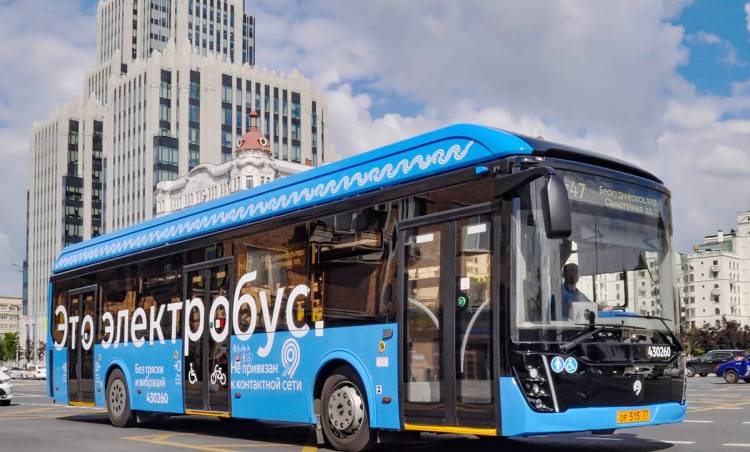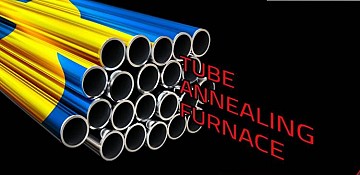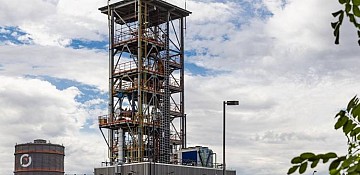
Almost a quarter of the globally generated harmful emissions into the atmosphere are caused by the transport sector. In this regard, new global standards are being actively introduced, requiring the use of environmentally friendly transport. Hundreds of thousands of electric buses are already driving on the streets of major cities, and their number is steadily growing.
Moscow does not lag behind the global trend: the Moscow fleet of electric buses is the largest in Europe. For comparison, there are 300 operating electric buses in London, 259 in Paris, 200 in Berlin and 164 in Amsterdam. Another 400 electric buses are expected to be delivered to Moscow in 2021. By the end of 2023, the fleet of electric buses is planned to be increased to 2,300 vehicles, which will make up a third of the Russian capital's land transport fleet. Taking trams into account, about 40 percent of the city's land transport will switch to electric traction. And by 2030, the entire Mosgortrans park should achieve green status, i.e. become completely environmentally friendly.
Bloomberg New Energy Finance estimates that 47% of the world's buses will be electric by 2025. The champion in this area will be China, which is actively fighting the smog: by 2025, around 99% of all electric buses in the world will be operated there. What is the reason for the large-scale transition to electric transport? According to experts, one car with a gasoline engine annually emits about 120 kg of harmful emissions, therefore the main goal is to improve the ecology of large cities.
How electric transport was introduced in Moscow
KAMAZ-6282 participated in the trial operation of electric buses, which began in the capital in 2015. The bus demonstrated good results when used in regular routes with passengers. According to the company, the KAMAZ-6282 electric bus is one of the most sophisticated products manufactured by KAMAZ. "The launch into serial production of KAMAZ-6282, a fundamentally new type of passenger transport, became one of the milestones in the development of our company. The creation of environmentally friendly electric vehicles is one of the modern global trends in the automotive industry, so we believe that this project has great potential. KAMAZ is ready to develop different types of electric buses, according to the unique needs of different Russian regions," commented Sergey Kogogin, Director General of KAMAZ.
The KAMAZ-6282 electric bus accommodates 85 passengers, comes with a lowered floor and a ramp. Recharging it takes just 10 to 20 minutes. The lithium-titanate batteries used in the electric bus are considered environmentally friendly also during production, due to the minimum of carbon dioxide emissions. The lithium titanium battery and power electronics units are located on the roof. This allows to maximize space in the interior for passengers. The power reserve on one recharge is 51 km. The maximum speed is 80 km/h.
How does transition to electric transport improve the ecology in megalopolises?
Several cities have already announced the transition to electric buses. For example, Los Angeles authorities have promised that all buses in the city will be electric by 2030. London, Paris, Copenhagen, Barcelona, Milan, Auckland, Mexico City, Cape Town and a number of other cities from 2024 intend to purchase only electric buses. Moscow may achieve this even earlier: from 2021, the city authorities plan to purchase only electric buses. According to forecasts, all buses in the Russian capital will be electrically powered within a decade.
Electric buses began regularly operating on Moscow passenger routes in September 2018. Today, Moscow electric buses run on 40 routes in various districts of the city. Since then, they have transported over 55 million passengers and covered more than 22 million kilometers along the roads of the largest Russian metropolis.
Rosteс State Corporation is one of the largest industrial companies in Russia. It unites more than 800 scientific and industrial organizations in 60 regions of the country. Its key areas of activity are aircraft engineering, radioelectronics, medical technologies, innovative materials, etc. The corporation’s portfolio includes such well-known brands as AvtoVAZ, KAMAZ, UAC, Russian Helicopters, UEC, Uralvagonzavod, Shvabe, Kalashnikov, etc. Rostec is active in the implementation of all 12 national projects. The company is a key provider of Smart City technology, it is engaged in the digitalization of public administration, industry and social sectors, and it is developing plans for the development of 5G wireless technologies, an Industrial Internet of Things, big data and blockchain systems. Rostec partners with leading world manufacturers such as Boeing, Airbus, Daimler, Pirelli and Renault. The corporation’s products are delivered to more than 100 countries worldwide. Almost a third of the company's revenue comes from the export of high-tech products.
KAMAZ is the largest Russian truck manufacturer. It is one of the world's 20 leading manufacturers of heavy trucks and holds the 16th place in terms of production of heavy trucks with a gross weight of over 16 tons. The KAMAZ Group unites 109 companies in Russia, the CIS and abroad. The KAMAZ Group unites 109 companies in Russia, the CIS and abroad.
World Media Group (WMG) Haber Servisi
 Industry News (English)
Industry News (English)
 Industry News (English)
Industry News (English)
 Industry News (English)
Industry News (English)